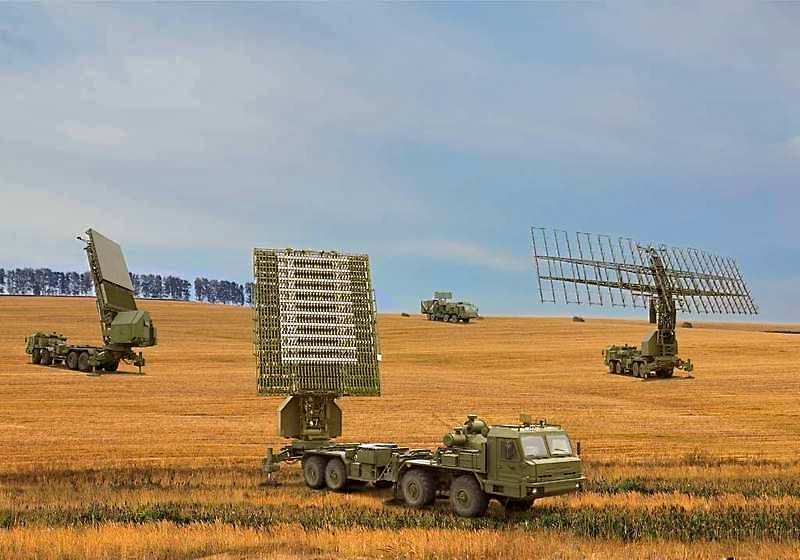Stealth Is Dead! Long Live Stealth! — War Is Boring — Medium
A Russian military expert has sounded a seemingly dire warning for the United States. Dr. Igor Sutyagin claims that stealthy fighter jets and bombers can’t stay hidden much longer as enemy radar technology improves.
The U.S. military is betting hundreds of billions of dollars—in essence, its whole air-power investment—that detection-dodging stealth works … and will keep working for many decades to come.
So if Sutyagin is absolutely right, America could be in big trouble. The roughly trillion dollars Washington has spent designing and building F-117s, B-2s, F-22s, F-35s and new Long-Range Strike Bombers since the 1970s has been a waste. And the United States is about to lose its aerial advantage.
 |
| JSF Gadfly AVWeek's Bill Sweetman |
Two characteristics of the JSF that bear on this debate have been raised by Boeing and recent think-tank papers. One is the fighter’s susceptibility to detection by very-high-frequency (VHF) radars, and the other is the extent of its EA, or jamming, capability.F-35 Stealthier Than F-22? | Ares
They are not secret at all. The F-35 is susceptible to VHF detection and—as Boeing’s charts suggest—its jamming is mostly confined to the X-band, in the sector covered by its APG-81 radar. These are not criticisms of the program but the result of choices by the customer.
To suggest that the F-35 is VHF-stealthy is like arguing that the sky is not blue—literally, because both involve the same phenomenon. The late-Victorian physicist Lord Rayleigh (photo) gave his name to the way that electromagnetic radiation is scattered by objects that are smaller than its wavelength. This applies to the particles in the air that scatter sunlight, and aircraft stabilizers and wingtips that are about the same meter-class size as VHF waves.
Updated: Aviation Week suspends Bill Sweetman from F-35 story - The DEW Line
F-35′s Stealth, EW Not Enough, So JSF And Navy Need Growlers; Boeing Says 50-100 More « Breaking Defense - Defense industry news, analysis and commentary
WASHINGTON: Stealth is being outpaced by software, radar and computing power, so electronic warfare and cyber attacks are growing in importance. While the F-35 may possess excellent — if circumscribed — electronic attack and cyber capabilities, it needs help from the Navy’s EA-18G Growler electronic attack aircraft.
Overlooked....the mysterious imprisoned US spy who gave the Daily Mail witness testimony about MH-17 - Discussionist
https://www.rusi.org/analysis/authors/ref:B4DD39DA614B84/
RUSI - Dr Igor Sutyagin
Royal United Services Institute
for Defence and Security Studies
Whitehall, London, SW1A 2ET, Great Britain
T: +44 (0)20 7747 2600
his Wiki page, it's a very interesting read: http://en.wikipedia.org/wiki/Igor_Sutyagin He was a spy who the Russian government imprisoned for espionage. He was then traded to the US in exchange for 10 Russian spies who had been captured. (10 for 1.) He must be a pretty valuable asset if the US gave up 10 spies for him. Since then he has worked for the US and UK governments on issue related to foreign policy and Russia. Obviously his giving info in regards to MH-17 calls for further serious questioning.
Igor Sutyagin: The Opposite of Air Power from Royal United Services Institute for Defence and Security Studies
 |
| Almaz-Antey/NNIIRT 55Zh6ME Nebo MEdeployed. The VHF-band component is at the right of the image, the S/C-band component is at the left of the image, the L-band component in the foreground, and the data fusion system, in the background. (NNIIRT image). |
The 1L119 Nebo SVU is the first Russian VHF Band Active Electronically Steered Array (AESA [Click for more ...]) antenna equipped radar to be disclosed publicly. While a limited amount of technical literature has been disclosed on this design, the VHF antenna array permits considerable additional analysis. This paper explores, in radar engineering terms, antenna and transmit receive channel design features, and the cardinal performance parameters for this radar. Published performance data indicate thatRUSI - RUSI Defence Systems - The Limits of Stealth
this radar has sufficient accuracy to be used as a battery target acquisition radar for the S-300PMU-1/2 / SA-20 Gargoyle and S-400 / SA-21 Growler Surface to Air Missile systems. Numerous Russian sources are citing exceptionally good performance against VLO/LO aircraft targets.
One of the most important elements of Russia’s air-defence exports are unique means of detecting hostile aircraft. Unlike Western states, Russia has been constantly developing low-band radar technology since 1930s and has achieved impressive results. By combining modern radar signal shapes and radar-return processing algorithms, modern Russian low-band radars have an error box small enough to enable surface-to-air missiles (SAMs) or air-to-air missiles (AAMs) with active or infrared seekers to be flown near enough to low-observable targets to acquire them and initiate terminal homing. For instance, the export version of the Track Tall (55Zh6U) low-band radar has a publicly advertised error box of ‘less than 60 metres’ for distance measurement. At the same time,The Navy's Grade 36 Bureaucrat: Stealth is not all its cracked up to be
the modern techniques used to design low-observable aircraft are much less effective against low-band radars than against more widespread short-wavelength radars, which results in low-observable aircraft being comparatively easier to detect by low-band radars.
The Navy's Grade 36 Bureaucrat: What Zoltan Dani can teach us


No comments:
Post a Comment